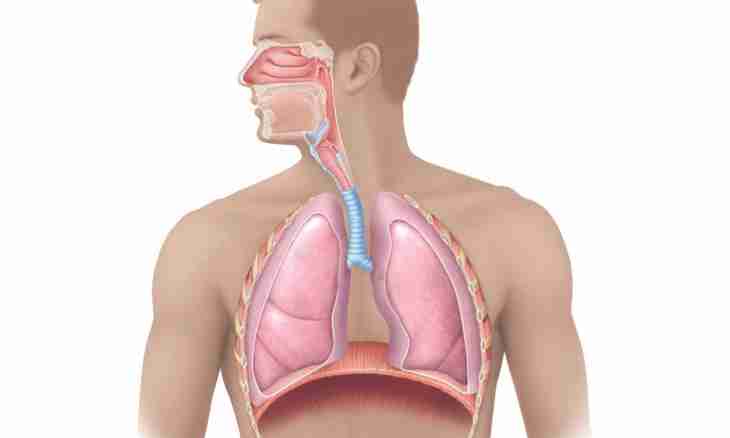Energy is necessary for any organism for activity. The organism receives it during the chemical reactions happening in cages in which oxygen participates. Supply of an organism with oxygen is carried out by respiratory organs. They remove from an organism gaseous waste product – carbon dioxide.
The most ancient respiratory organ – the gills extracting oxygen from water. But already ancient primitive fishes on the front end of a digestive tract had an outgrowth from which the air bag was created. At some fishes it was transformed to a swimming bubble, at others – to an additional respiratory organ. Such body mattered for the amphipneustic fishes living in periodically drying up reservoirs – it allowed them to receive oxygen from air, transmitting it through walls of an air bubble and blood vessels in blood.
For the first time in evolutionary history the real lungs appear at tritons and other primitive amphibians in the form of the simple air bags covered with capillaries is already pair body. At frogs and toads the surface of pulmonary bags is increased at the expense of internal folds.
The higher position on an evolutionary ladder is held by an animal, the his lungs are divided into internal cavities more. Thanks to it the surface area through which there is a gas exchange between lungs and blood increases.
Lungs of the person represent the pair body located in a thorax. The external surface of lungs directly adjoins to edges, and the root of a lung which part bronchial tubes, a pulmonary artery, pulmonary veins and pulmonary nerves are is from the inside located. The right lung is slightly larger than left and is divided into three shares – top, average and lower, and left – on top and lower. Each share is subdivided into segments – sites in the form of the wrong truncated cone. In the center of a segment the segmentary bronchial tube and a branch of a pulmonary artery is located, and in partitions between the segments formed by connecting fabric there are veins. Segments consist of pyramidal segments in which bronchial tubes branch on bronchioles on which ends there are atsinusa – complexes of smaller bronchioles. These alveolar bronikhola form the alveolar courses on which walls alveoluses, the smallest structural units of lungs are located. Alveoluses represent the hemispherical bubbles opened in gleams of the alveolar courses. In them function of breath in the form of gas exchange between the atmospheric air coming to lungs and blood which passes through the capillaries penetrating lungs is carried out. Gas exchange is carried out under laws of diffusion thanks to a difference in the partial pressure of oxygen and carbon dioxide in alveolar air and in blood: blood is saturated with oxygen, and alveolar air - carbon dioxide. Intake of atmospheric air in lungs happens under the influence of the atmospheric pressure when pressure in lungs decreases. It occurs thanks to expansion of their volume at a breath. At an exhalation the volume of lungs decreases, pushing out air. It is called ventilation of lungs. Respiratory movements are carried out by means of costal muscles and a diaphragm – the muscular partition separating a chest cavity from belly.

